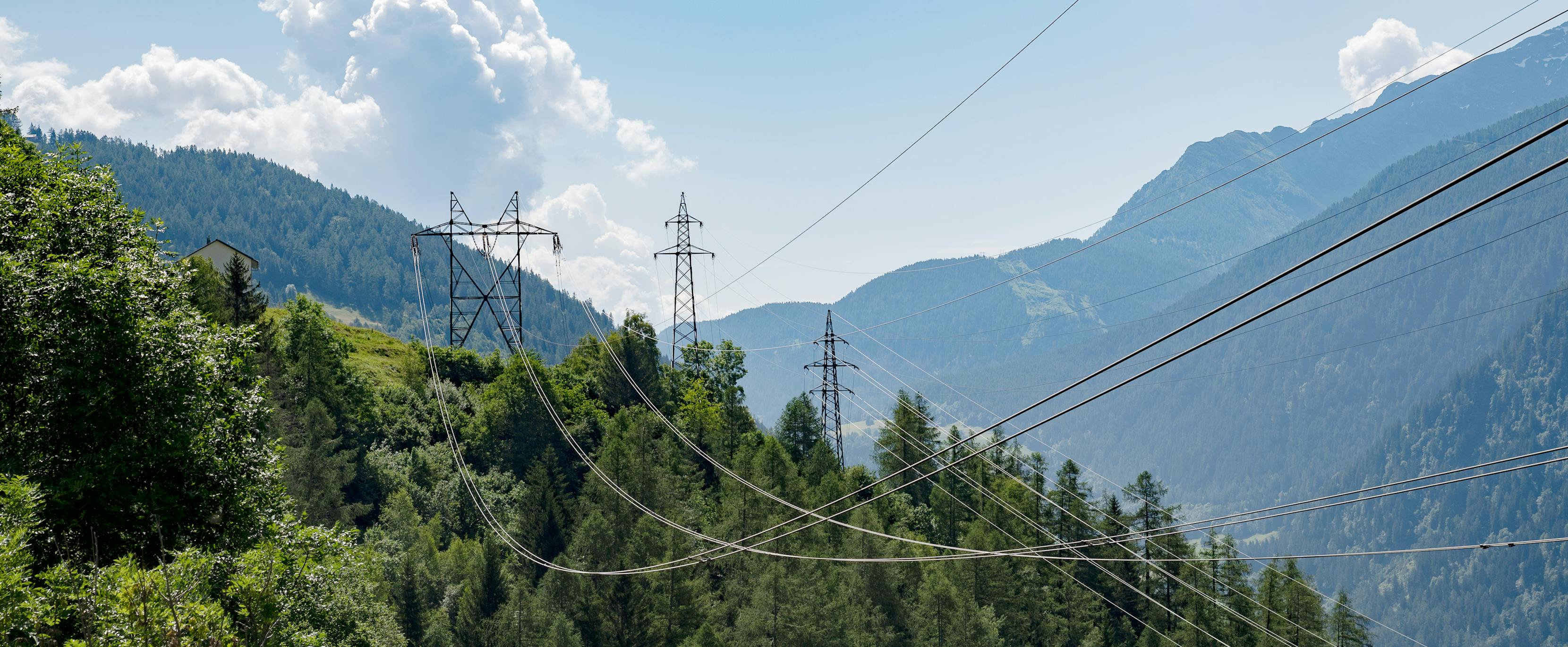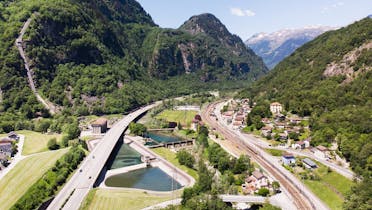Grid project Airolo – Lavorgo Sustainability

The canton of Ticino is known for its Mediterranean flair, for its spicy osso buco with creamy polenta and, of course, for its beautiful landscapes. Whether Sotto or Sopraceneri, the Italian-speaking part of Switzerland is a captivating location with picturesque mountain scenery and deep blue lakes. Just like elsewhere in Switzerland, these landscapes must be protected. Swissgrid has taken this to heart in the Airolo – Lavorgo grid construction project, with more than 100 alternative measures planned for the construction of the new extra-high-voltage line. These measures are designed to compensate for the effects on the natural surroundings caused by the construction.
Dismantling of existing lines
The most obvious way in which the impact on the landscape and on built-up areas is being reduced is by dismantling the old line. Due to the restructuring of the extra-high-voltage lines in Ticino, it is not only the old line between Airolo and Lavorgo that will disappear, but also the line between Peccia and Lavorgo. This will happen as soon as the All’Acqua and Magadino line, which runs through the Maggia Valley, is completed and in operation. The Campolungo area, which is listed in the federal inventory of landscapes and natural monuments of natural importance, will then be free of extra-high-voltage pylons. In addition, part of an AET medium-voltage line will be hidden underground alongside the A2 motorway. But there are other measures that will benefit flora, fauna and humans.
Flora, fauna and humans: a wide variety of measures
The black grouse and the golden eagle are bird species found at higher altitudes. However, the golden eagle in particular is an increasingly rare sight when hiking through the Ticino Alps. It is regarded as a priority species in need of protection. Both bird species are being monitored as part of the alternative measures for the Airolo – Lavorgo grid project. This will allow their population in the sunniest part of Switzerland to be tracked. If necessary, further measures can then be taken to protect them. Speaking of protection, that is precisely the point of an alternative measure. Collision protection systems will be installed on the new line between the two Ticino municipalities. High-voltage pylons can represent an obstacle for various bird species. Anti-collision systems will be set up in areas that are especially sensitive due to flight paths, the incidence of endangered species and the presence of nesting sites. Consequently, it is not only the black grouse and golden eagle that will benefit from this measure, but all bird species that are native to Ticino.
Collision protection for birds is being installed on the new line between Airolo and Lavorgo.
Swissgrid has also planned various measures to protect the local flora. One of these involves the restoration of the Trenta Valli stream, which originates at the Rodi hydroelectric power plant before flowing into the river Ticino. There are artificial and intensively cultivated banks over long stretches of its course. The project includes restoration and possibly renaturation of the Trenta Valli stream. In addition, an interesting nature trail has been created in recent years to encourage visitors to discover the Piottino gorge and the Bedrina peat bogs.
Another alternative measure consists of the creation and restoration of grazed larch forests in order to reclaim former grazed areas for agricultural purposes. This means that farmers can let their cattle graze in the larch forest between Airolo and Lavorgo, resulting in agroforestry use, i.e. an interplay between agriculture and forestry. At the same time, the measure frees up the route for the construction of the new line.
Alternative measures are part of every Swissgrid grid project. An environmental impact report is prepared for all projects. This report is included in the planning application and is drawn up by internal and external environmental experts. The report evaluates the entire construction project and the associated logistics, and defines measures to reduce the impact on the environment. The focus is always on compliance with environmental protection legislation.





